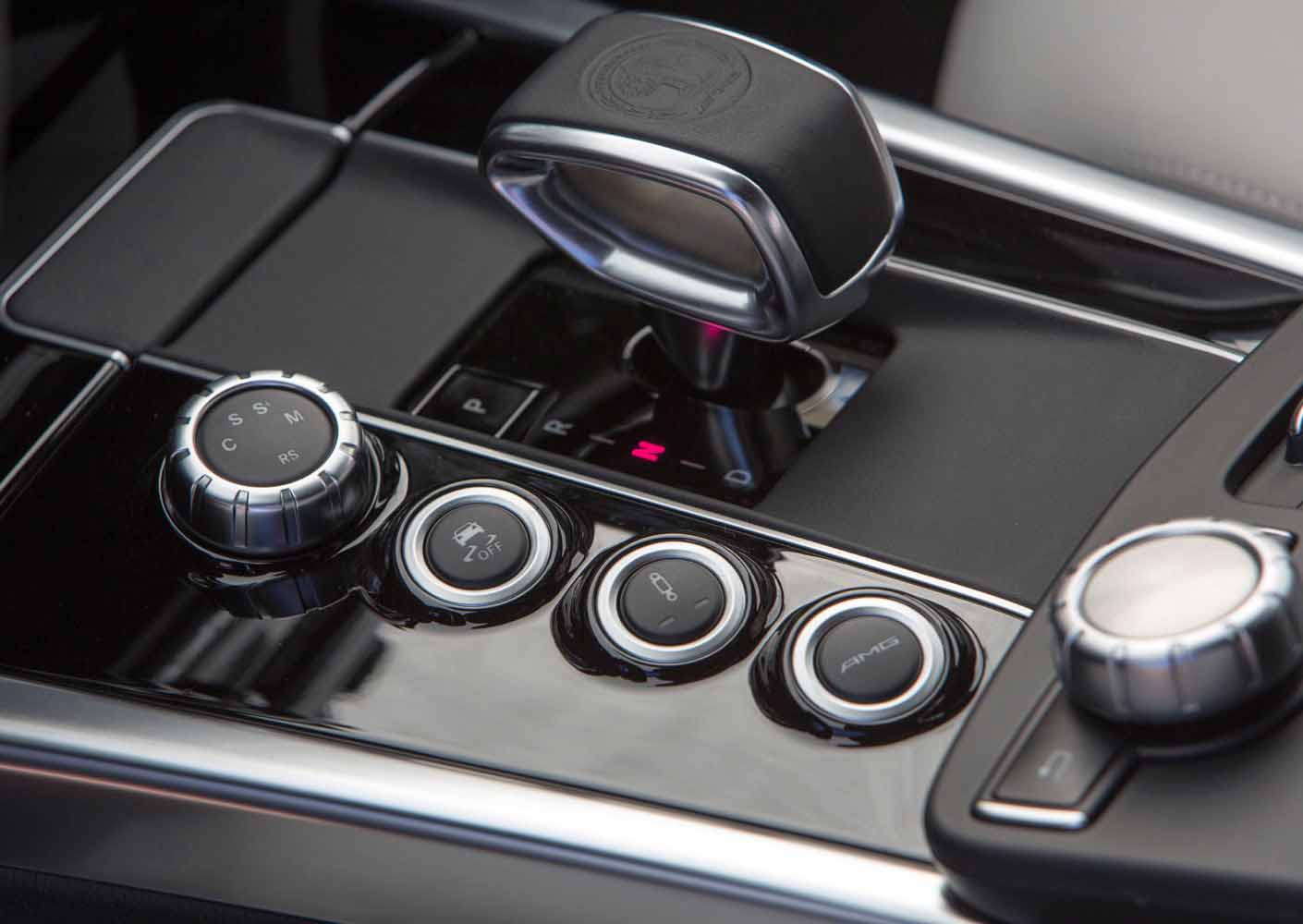
Modern retro cars offer a variety of options for those who like the old-fashioned look of a car. It's a good place to start is the Ford Mustang and Honda S660. The Mini Cooper and Chevrolet SS are also popular retro cars. Let's take an in-depth look at some of these cars. Which one suits you? These cars are not your daily vehicle. They're status symbols so they're the ideal choice for every driver.
Ford Mustang
Younger consumers are increasingly interested in retro cars, and Ford hopes to draw a younger audience with the new Mustang model. While the average buyer is 51 years old, the new model will be aimed at a younger audience to stand out from retro cars. It features many retro elements such as a shark-like front, three-element taillamps and radial chromed exhaust vents. The steering wheel is retro-inspired with three spokes.

Honda S660
The Honda S660 is a modern retro car with a classic design and a price tag. It will be a rear-wheel-drive vehicle with a mid-mounted engine. The S660 will cost around 2,000,000 yen. In the United States, it is less expensive than $16,500. It will compete against front-wheel-drive vehicles such as the Daihatsu Copen. The S660 is available with either the standard engine or the turbo engine. The engine can produce 64 horsepower from its three-cylinder turbo DOHC turbo motor and can rev as high as 7,700 rpm. The 6-speed manual transmission has a CVT, which simulates gear changes. The Honda S660 is expected to retail at $16,500 in Japan. However, it will not be sold internationally.
Mini Cooper
Mini Cooper is one the most famous classic cars in the world. It still sells in large numbers. Fans of the classic model, however, consider the original Mini as well-worth owning. The 2015 Mini Cooper is not the only Mini Cooper that has been modified. Despite the modern touches, this classic car has retained the iconic design of the 1960s. Let's take an in-depth look at this retro modern car.
Chevrolet SS
The Chevrolet SS is a great blend of old-school and modern, but it is not too old-school. Its big, soft body is tuned to look like a Detroit automobile, and it has many modern features. Its standard features include heated leather seats, xenon headlights, keyless entry and ignition, a Bluetooth-enabled infotainment system, Bose audio, and factory navigation. Blind spot monitoring, lane departure warnings and automatic parallel parking are just a few of the other features. The SS has a full-size spare and is equipped with Chevrolet's MyLink technology, an automatic transmission and dual-zone climate control.
Nissan Micra
The Nissan Micra debuted in 1997. It was one the most well-received cars of that year. The car underwent a facelift in 1998. From that point on, it was produced until 2003. The Nissan badge was prominently featured in the facelift's revised exterior styling. It features a chromed extended motif V motif. Its bumper, headlamps, and tail lamps were all replaced with LEDs. New seats, a redesigned centre console and air vents were added to the vehicle. Also, new fabric seat and door pads were installed.

Citroen Alpine A110
Citroen Alpine A110 - A retro, modern car with a distinctive appearance. The A110 comes with a high roof, and an 1130mm of ground clearance. The interior is spacious and allows for up to two children or small adults to be comfortably seated. Its suspension features a steel backbone chassis, with coil springs and front wishbones. Although the A110 is a small car it feels agile and responsive at low revs. The brakes feel firm, and the steering feels well-weighted. The car has an energetic and vibrant exhaust note.
FAQ
What qualifications do you need to be a mechanic?
To become a mechanic, you'll need to pass a series of exams. These include:
-
A general knowledge test
-
A practical exam
-
An apprenticeship test
These tests are designed for you to understand the basic concepts and principles of mechanics before your start as a technician.
Once you pass these tests you can become a mechanic. However, you'll still need to complete an apprenticeship. This will include training in the trade.
To fully understand the mechanics of vehicle repairs, you'll need workshops and classes. It will be necessary to work alongside experienced mechanics.
A mechanic must be highly focused and attentive to detail in order to succeed. Vehicle repairs require you to be very attentive.
To become a good mechanic, you need patience and persistence. If you don’t like following directions, then this career path may not suit you.
However, if you love cars or enjoy working on them, you might be happy in this field.
How long is an automotive course?
An automotive course is three years long.
The first year of your training is devoted to theory. You will learn all about cars. The second year is dedicated towards practical training. This includes learning how to drive, fix engine problems, and doing other maintenance jobs around your car. The last year of your training is spent on practical training, where you learn how to fix real-world problems.
Is it hard being a mechanic apprentice
Although it's not an easy task, you will learn quickly and have many opportunities to advance.
You need to have patience and perseverance. You must also know how to fix cars, trucks, and motorcycles.
There is a lot of pressure from customers and family members who want you to succeed. However, you shouldn't be forced to make difficult decisions.
If you enjoy fixing cars, it could be a great career choice. You can make a decent living and build your business.
However, you might prefer to go down another route. If this is the case, you might want to become a technician.
This involves using your technical expertise to support other workers. Technicians could benefit from your technical expertise to solve problems or teach new techniques.
Another option is becoming a service advisor. You will offer assistance and advice to customers when they bring cars to a garage.
It all depends on your goals. There are plenty of options available, and you can choose which suits you best.
Is automotive mechanic a promising career?
Automotive is an exciting industry filled with opportunities for people who are committed to excellence. It is important to work hard and learn as much from others as you can in order to succeed in this industry.
Communication skills are important as customers and coworkers will often be your main focus. You must also be willing and able to travel long distances, which can make it difficult to commute.
You can take classes at universities and community colleges if you are interested in a career as an automotive technician. Many schools offer programs specifically designed for students interested in auto repair, sales, or customer service.
Mechanical engineering should be your first choice for a degree. It is possible to earn a bachelor’s degree in only four years.
Many companies will also hire graduates right out of school. So, it is wise to begin searching for employment while you are still able to study part time.
After your education is complete, you will probably need some training in order to become an automotive technician.
You will need to pass the Automotive Service Excellence certification exam. This test covers topics such engine maintenance as brakes, steering, suspension, etc.
After passing the ASE test you can apply for a National Institute for Automotive Service Excellence (NIASE) license.
You can repair vehicles owned by private citizens with a license. Based on the services rendered, you will receive compensation.
It's important to note that not all states require licensing. You will need a license if you want to work in a different state.
Some states don’t issue licenses until a certain amount has been completed. If this applies to you, then you may need to find another option.
Is it hard to get a job working as an auto mechanic?
Yes, it's possible. Many garages post their vacancies online. Many people apply simply because they think it might make them feel good. To get your foot in front of the door, try applying for a few positions to see if any accept student applications. Another option is to ask family members and friends if anyone works in this industry. You might be able to refer someone.
What is the average time it takes to become a mechanic?
A mechanic is only an expert if they have years of experience. Working under the guidance of a professional mechanic is the best way to learn how repair cars.
You will spend time in a workshop learning everything you can about cars. You will need to read books on mechanical engineering and car design.
Auto school is also required.
It's crucial to start as soon as possible. To learn about automotive technology, don't wait to be older. Start studying automotive technology now to become a mechanic.
How can I fix my car as a hobby?
You might be interested in cars as a hobby. You can learn to fix them, buy them parts, and even sell them. It's a fun hobby that you can do if it interests you.
However, it's not easy to turn this into a full-time career. This requires dedication and hard work. And you'll need to invest a lot of money too.
You might not have a compelling reason to get involved in the car industry.
Statistics
- According to the BLS, the median annual salary for automotive service technicians and mechanics in the United States was $44,050 in May 2020. (uti.edu)
- According to the BLS, total auto technician employment is expected to exceed 705,000 by 2030. (uti.edu)
- The U.S. Bureau of Labor Statistics (BLS) reports that the job outlook for automotive service technicians and mechanics is expected to decline by 4% from 2019 to 2029. (indeed.com)
External Links
How To
How to properly diagnose your car for repair
Before you can determine if your car requires repairs, it's important to first analyze the symptoms. Follow these steps to properly diagnose your vehicle.
-
Check engine lights. Inspect the dashboard light indicators. These include the engine lights, the oil pressure gauge and the battery light indicators. The RPM gauge and coolant temperature gauge should also be checked. You may have a problem with your vehicle if any of the indicators are flashing for more than a few days.
-
Take a look at the treads. Tires with worn treads could cause problems when handling or braking. Also, inspect the treads of your wheels. They should look clean and be smooth. You can do this by taking off the wheels. Check the tread condition with a flashlight.
-
Observe the brake fluid level. You must keep track on the level of brake fluid in your vehicle. This ensures that your brakes work properly. Low brake fluid levels could cause your brakes to fail when you apply pressure.
-
Make sure to test the suspension system. Most vehicles have a suspension system that absorbs shocks and vibrations. This suspension system provides greater control and smoother acceleration and deceleration. It might feel uncontrollable or wobbly if your vehicle is suffering from a suspension problem. To test whether your vehicle has a suspension issue, try putting weight on the front or rear axle and observe the movement.
-
Examine the steering column. Steering columns are used to connect the steering wheel to the rest of the vehicle's components. Steering columns can be damaged by accidents. Replace it if your steering column feels loose or unsteady.
-
Pay close attention to the exhaust tube. The exhaust pipe helps move gases from a combustion chamber into the atmosphere. You can let harmful fumes into your home if your exhaust pipes crack or leak. You should also fix any bent tailpipes immediately.
-
Look under the hood. Take a look underneath the hood to find any strange or unusual items. Leakage of fluids in your engine could indicate that it is leaking. You should also contact a professional technician if there is an unusual odor coming from the engine compartment.
-
Check the air filter. The outside environment can collect dust and other debris in your vehicle's air filters. A dirty filter can lead to a poor vehicle's performance. Replace your air filter regularly.
-
Make sure you check the fan belt. Your vehicle's fan belt connects the engine to the transmission. If the fan belt fails, the engine won't start. It is very easy to replace your belt. You only need a screwdriver or pliers to replace your belt.
-
Check the radiator hose and hoses. The radiator hose carries water from the radiator to the engine. It can become cracked or damaged and leak hot liquid onto your engine. To repair the hose, you will only need to use a pair needle-nosepliers and a wire brush.
-
The windshield wipers should be checked. Windshield wipers use electricity to clean away snow and rain. They can leave streaks on your windows glass if they stop working. Change the washer fluid to fix the problem.
-
Verify the condition of your battery cables. The battery cables provide power for the electrical systems in your car. Always disconnect the negative wire before you replace batteries. Failure to do so can damage your alternator.
-
Be sure to check your headlights. Headlights illuminate the road ahead of you. If they don't work properly, it can cause poor visibility. To determine if your bulbs are out of date, check them.
-
Be sure to check the lights. When you approach them at night, the lights warn other drivers. You may be distracted by the light and end up in an accident.
-
Check your brakes. Before you have a collision, brakes slow down your car. If they aren't working correctly, you could lose control of your car and crash.
-
Check the oil regularly. The oilkeeps your engine lubricated. It prevents metal parts from rusting too quickly. It is recommended to change the oil once a month.